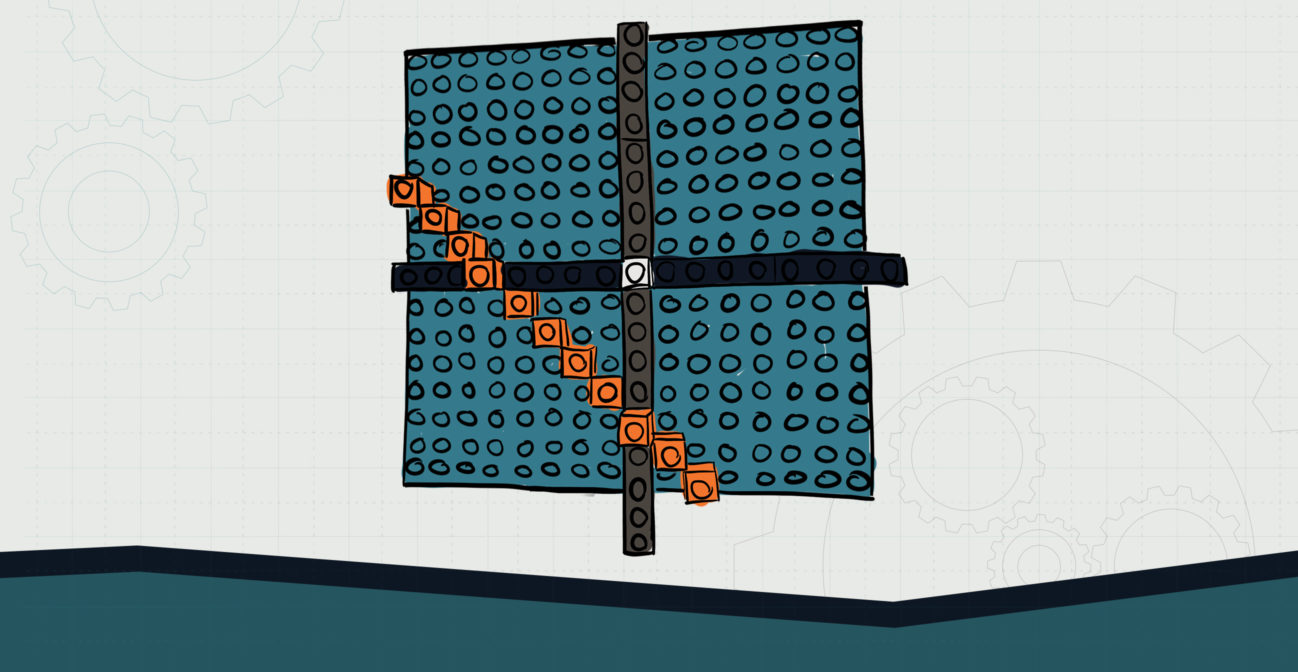Objective:
Child will use similar triangles to determine slope and interpret unit rates as slopes.
Essential Question:
How might we use triangles to determine the rate of change?
Special Materials:
None
Bricks Required:
1x bricks of various sizes; two brick plates
Project Structure
Engage/Explain:
- Provide child with an equation of a line that they can easily graph using SOHO Bricks. For example, y = (2/1) x + 1. Child should graph by plugging in values for x and determining the y coordinate.
- Ask child to reflect upon the equation and the graph.
- “Looking at your graph, where does the line cross the y axis?”
- “Looking at your equation, how might you be able to tell where it crossed the y axis?”
- “Do you think the equation will always tell you where the line will cross the y axis? Why or why not?”
- “Does the equation tell us anything else about the graph?”
- Facilitate child to think about the “mx” portion of the equation. How is it represented in the graph?
- Through observation and exploration, child may discover that each point increases in the y direction by 2 units while the x increases by 1 unit, and that this is the visible component in front of the x.
Explore:
- Ask child to provide an explanation of how they know that the x and y coordinates move 2/1 every time.
- Ask child to prove that this works if they do not count from one point to another. In other words, can they skip points and still get the same results?
- Child may elect to use bricks to construct triangles from any two points;
- Child may not see at first that their results are the same.
- Work with child to demonstrate that similar triangles will always result in the same ratio of 2/1 for this line. This is called the slope or the rate of change.
- See if child can construct an equation to determine the slope.
- Discuss the slope formula.
- How does this fit our understanding of rate of change and our similar triangles?
Explain/Elaborate:
- Provide child additional problems to determine the rate of change for each problem and they intercept.
- Child may do these on graph paper and sketch triangles to show the ratio of the rate of change (slope).
Further Elaboration (The SOHO Stack):
- In this activity, child will have an opportunity to blend science and math by performing a SOHO Brick stack.
- Take turns with your child stacking as many bricks as they as you can in a given time allotment: 1 second, 2 seconds, 3 seconds, etc. Each attempt should be repeated at least 3 times and the average taken.
- Child then plots their own data, determines the line of best fit, finds the slope of their line using similar triangles, and determines which had the fastest rate of brick-stacking.
